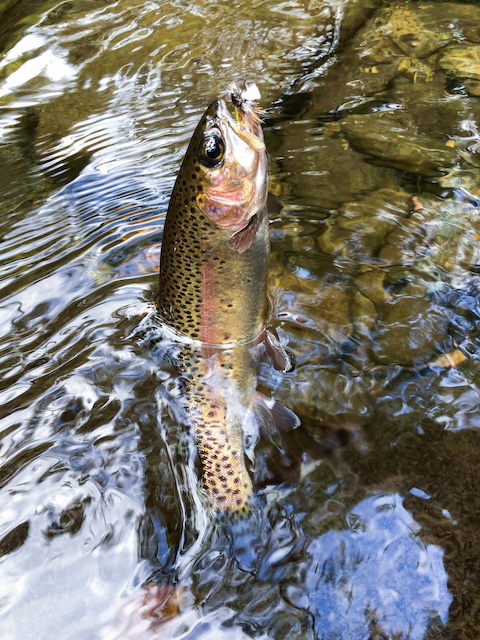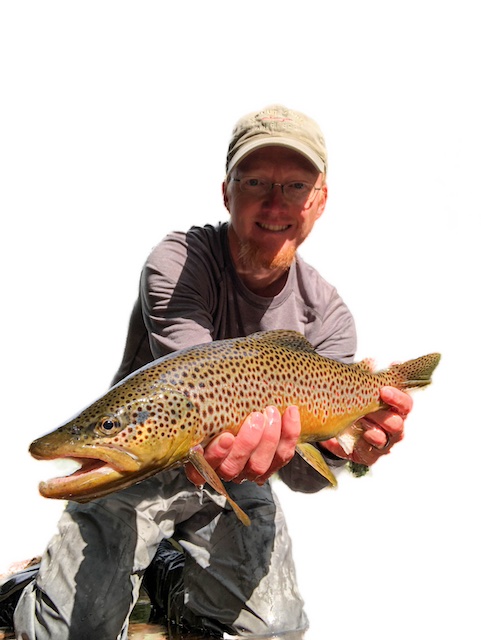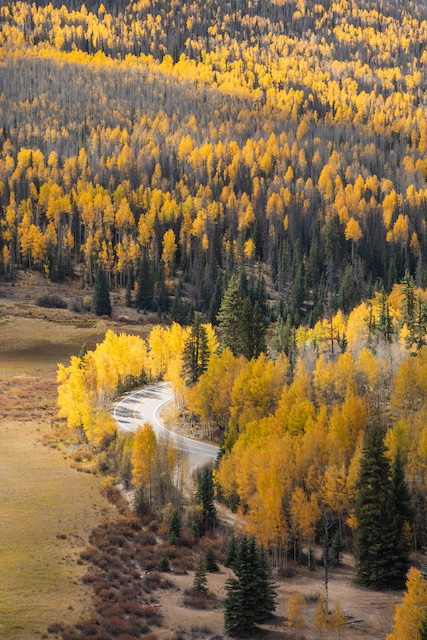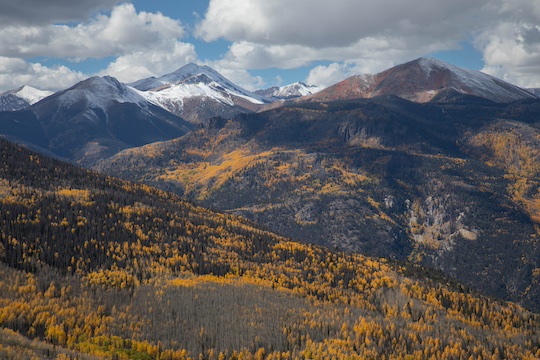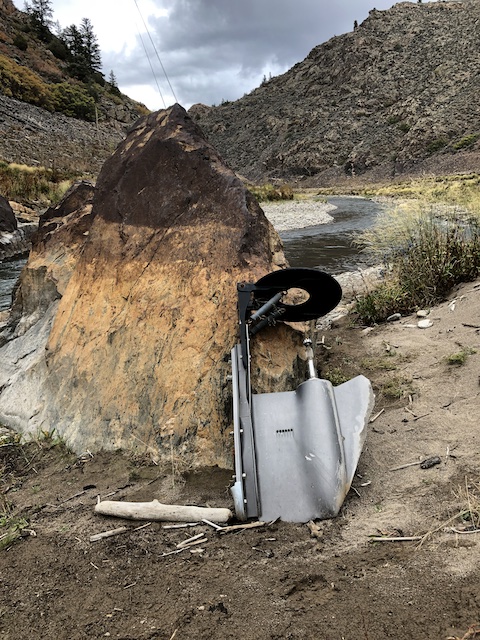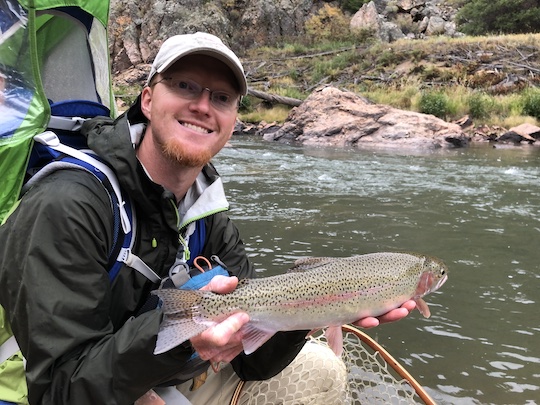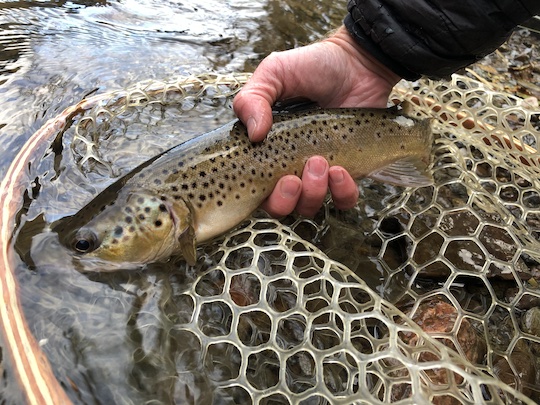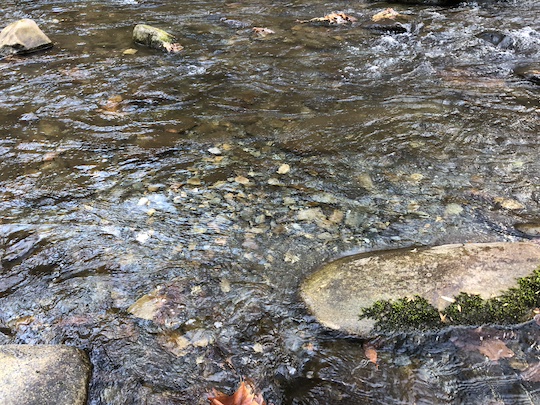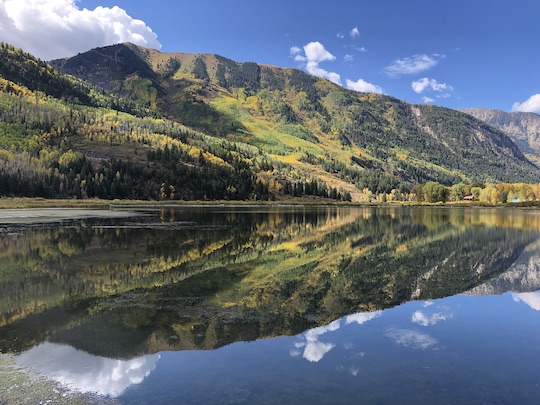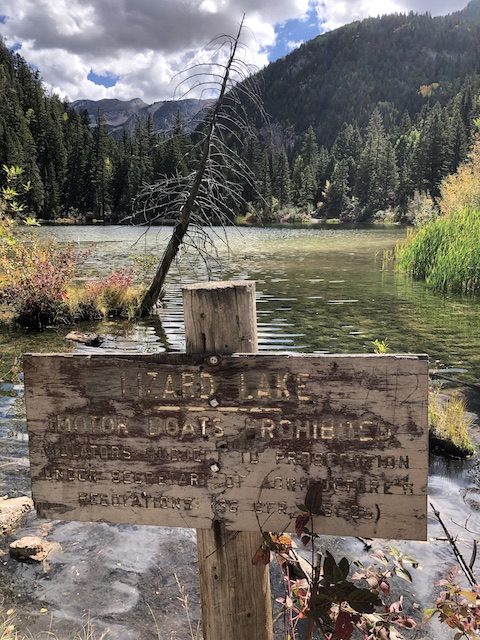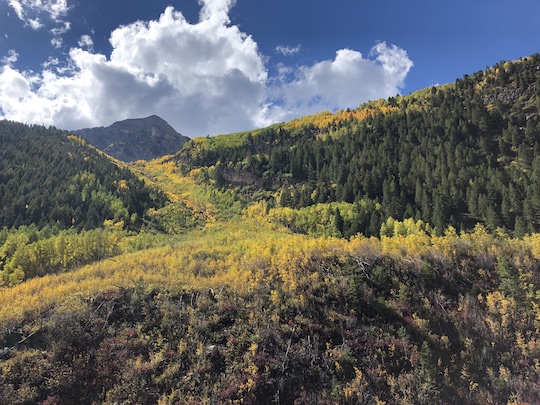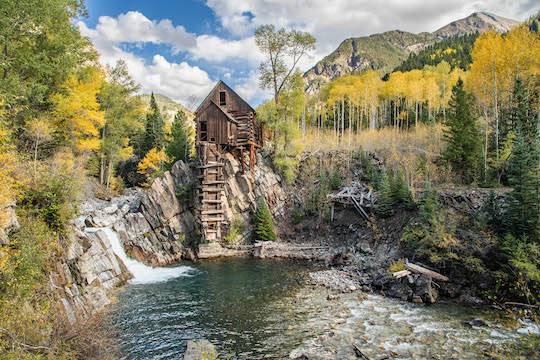If you're like me and have been around the inter webs for a long time, you've seen some variation of the question. What is the best fly rod for.....? You name it. Best fly rod for streamer fishing. Best fly rod for nymph fishing. Best fly rod for brook trout. Best fly rod for brown trout. Best fly rod for Yellowstone. In other words, people are always looking for an edge when it comes to their piscatorial pursuits. This question has been asked via online message boards, in person and on the phone when I worked at a fly shop, and nowadays on Facebook groups. The problem is, they are asking the wrong questions of the wrong people. The title for this short piece is clear enough, but I probably should have called it, "How To Ask the Right Questions About Fly Rods."
The real solution here that very few people actually seem to seriously want is to work hard at becoming a better angler. That could include investing money into some guided fly fishing trips or it could be as simple as just getting out on the water more. Investing a lot of time goes a long ways towards making someone proficient. If you have invested that kind of time, you've probably already figured out the answer to the question of best fly rod. If you haven't been fly fishing long enough or don't have the time to get out more, I'll address one specific version of this question. What is the best fly rod for Smoky Mountains fly fishing?
Before I get too far into my own personal opinions on the matter, I'll share some background. First, this is not the first, and probably won't be the last time I deal with some form of this question. I've covered How To Select the Perfect Fly Rod before. This is a little different from that post as you'll see. Go back and read it first just to be sure. Second, I've been fly fishing for close to 30 years now or nearly 3/4 of my life. In other words, I have a little experience that has led me on a circutuous journey that has brought me nearly full circle on rod selection. I'll explain more shortly. Finally, note the first sentence of this paragraph. No matter how much I or any other angler may have learned a thing or two along the way, anything we might suggest is simply our own opinion. No matter what anyone else says, there is no right or wrong answer to any of these questions.
When I first started fly fishing, I got a Walmart special. In retrospect, I'm not sure it is even a fly rod. At the time, however, it was perfect. Everything about that rod looks like a fly rod except for how clunky it is and how terribly it casts. I'm suspicious it is actually some sort of crappie rod, and yes, I do still have it floating around somewhere. Still, and this is the important part, I learned to cast with the rod. In fact, I was hauling and even double hauling without knowing that was a thing. The darn rod wouldn't cast worth a flip without a good haul. Necessity is the mother of invention. At the time, I didn't know that hauling was an actual technique, so I made it up as I went. As time went on, I yearned for a better rod. Now I know better. That is a slippery slope, but at the time I was convinced that a better rod would help.
The next rod wasn't half bad, but still not the right rod for the job. It was a 6 weight, too heavy for what I was doing, but better than my current setup. Of all the rods I've ever owned, I actually have probably used it the least or pretty close to it. Not that anything was especially wrong with the rod, but it wasn't too long after getting this rod that I got my first "nice" rod. That 6 weight did come in handy years later, but that's another story for another day. My first nice rod was an Orvis Superfine 8' 4 weight, known as the Tight Loop. To this day, it is still one of my absolute favorite fly rods. So much so, in fact, that I eventually picked up a second to have as a backup. Orvis doesn't make these rods and hasn't for more than 20 years I believe, so you can't just get a new one made unfortunately.
That rod really molded me as an angler. Because it was the nicest rod I had for several years, it became all I fished. I learned to do a LOT with that 8' 4 weight rod, but what it really excels at is dry or dry/dropper fishing on small to medium sized mountain streams. When I learned to high stick nymphs for the legendary Walter Babb, he kindly suggested that I might want a slightly longer and faster rod. The soft Superfine is just too flexible to be a great tight line rod although it works in a pinch. In fact, I learned to be deadly with that rod, but it is not the most efficient rod I could use for that method. Thus it was that I found myself looking for yet another fly rod. The next rod would be my 4th in case you're counting. Don't worry, the numbers will get really blurry quickly.
My next "nice" rod was a 9' 5 weight St. Croix Legend Ultra. When I first got the rod, I was in college and had it shipped to my dorm. When it arrived, I hurried to string it up and cast it on the lawn. I was almost convinced the rod was broken. Yet, upon examination, the rod looked intact. You see, my casting stroke had evolved through the prior three rods and settled into something that made the SUPER SLOW Superfine (Say that 10 times fast!) work magic. It was far from fitted for a super fast St. Croix (Try that one also!). It took me quite a bit of work to make that fast action rod work correctly, but I got the hang of it and soon found myself fishing it far more than the Superfine. I had evolved as an angler and was more interested in the most effective fishing tool. The Legend Ultra was an amazing high sticking rod. Being so fast, you could stick most fish that ate instead of missing many like I did on the Superfine. Setting the rod hard enough was no longer my limiting factor.
After the 5 weight Legend Ultra, my next rod was a 9' 7 weight Temple Fork Outfitters TiCr-X. Even though I've had that rod for probably close to 20 years now, it is still one of my favorite streamer rods. I've caught big trout, largemouth and smallmouth bass, drum, carp, stripers, musky and many other fish on that rod. Since then, I've picked up just a few more rods. Short rods, long rods, 1 weight rods, 2 weight rods, 3 weight rods, 4 weight rods, 5 weight rods, 6 weight rods, 7 weight rods, 8 weight rods, 10 weight rods, 11 weight rods, well, you get the picture. Some rods have stayed and kept a place in my gear closet, while others have been sold to make room for more pressing needs. The important part here, however, is that I have plenty of options to choose from when I go fishing in the Smokies. In general, I find myself reaching for one of 4 or 5 rods depending on where I am fishing.
If I'm fishing Little River, Abrams Creek, the Oconaluftee, Deep Creek, Cataloochee Creek, or any of the other larger Park streams, I'm probably reaching for my 10' 3 weight Orvis Recon, or a 10' 2 weight Echo Shadow X. The Echo is an incredible rod, but the main reason I don't reach for it every single time is that it is a little light for jigging heavier streamers. I find that my Orvis 10' 3 weight Recon can do anything (for me) from jigging heavier jig streamers, to throwing dry flies, to high stick nymphing. In other words, it can cover any possible situation that might arise on the medium to large streams of the Smokies. It isn't the best rod for beginners because it is a little stiff. That makes it tough to get the hang of for someone new to fly fishing and trying to cast dry flies, but if you have been doing it a while, you can make this rod do everything. The Echo Shadow X is probably more fun to fish, and a nice Smokies fish feels incredible on the 2 weight. I'm just nervous casting super heavy jig streamers on a rod with such a delicate tip. There was a point where I thought you couldn't go too long on fly rods, but for me the 10' rod is the sweet spot. I have an 11' 3 weight Echo Shadow X that is just a little too much rod for me in many situations. If all you're doing is high stick nymphing, however, it is hard to beat as well.
If I'm going fishing for brook trout, then I'm likely reaching for a slightly shorter rod. I've fished 10' and longer rods on brook trout streams, and they are actually pretty useful. However, I like a deeper flexing rod for brook trout, and find myself reaching for the old Orvis Superfine rods or a fiberglass rod more often than not. If I know I'm only fishing dry flies or maybe a dry/dropper, then something between a one and four weight is perfect, and I hope it has a nice slow action. When you hook a 10 inch fish on a rod like this, you'll double the rod up and think you've hung the biggest fish in the Park. Lots of fun!
At this point, you might be asking yourself, which of these is the best fly rod for Smoky Mountains fishing? And that is the wrong question. What you need to be asking is what rod will I enjoy the most? Or maybe, what rod will help me catch the most fish? Or what rod is most effective for method XYZ? The answers to those questions are not necessarily the same.
I have long held that many people's recommendations for shorter rods for Park fishing is the furthest thing from the right rod for the job, and I still stand by that belief. However, that only applies for the question of what rod is the most effective rod in the Smokies. I can only think of two or three brook trout streams I've fished where I shorter rod is better suited for the job. For probably 90% or 95% of Great Smoky Mountains fly fishing, a rod ranging from 8'6" to 10" (or even longer) is ideal. This is because we find ourselves high sticking more often than not (for dry flies, nymphs, and streamers even on occasion). Longer rods equals longer reach. The farther you can reach towards the fish without spooking them the better, at least up to a point. There is a point of diminishing returns, however, based on rod swing weight and if it starts getting tip heavy, you've probably gone too long. That said, high sticking can be a mask for a deeper problem. Some high stick anglers continue to only fish that way because they find much less success utilizing other methods.
And that brings us to the next point. Shorter rods are fine if you just like to cast and don't fish as much pocket water. However, longer rods will still help you mend better because a longer rod can pick up more line off of the water. So now the question becomes clearer. Do you want the most effective rod, or do you want the rod you will enjoy most? If you measure enjoyment by how many fish you catch, then probably go for the longer rod most of the time (and not one that is too soft). Even on brook trout streams, fish the absolute longest rod you can manage without getting in the bushes and trees all day. If you measure enjoyment as a function of the joy of casting the rod combined with the total experience of catching fish in a pristine mountain stream, then a shorter deeper flexing rod might be the ticket. This is especially true if you enjoy playing the fish and not just yanking them in one after another. A true sporting gentleman might take this one step further and make sure the rod is made of split bamboo by a fine rod maker.
Deciding which rod you'll enjoy the most comes down to just casting a bunch of rods. Go to your nearest fly shop and cast a bunch of rods or ask your favorite guide to bring a selection to sample on the next guided trip. Ask questions of your local fly shop employees such as what rod will help me catch more brook trout? Or what rod will make me a better dry fly angler? Or what rod is best for high sticking/euro nymphing/tight lining/whatever else you want to call it? Or what rod brings YOU the most joy to fish? Ask 100 shop employees that last question and you'll get a TON of different answers, just like in that Facebook group.
Most of the best anglers I know aren't hanging out on online forums answering and asking questions about the best fly rods. So just know that your answers on places like a Facebook group will be wildly inaccurate, or at best will be rooted in that person's favorite (and in some cases only) rods. Make sure to ask the correct question, and it will go a long ways towards helping you select your next fly rod. If you need help figuring out what rod you need, don't hesitate to reach out to me. I won't necessarily have the right answer, but I'll definitely have some opinions, and I don't mind sharing those. The best discussion will probably happen on the phone or in person, because there isn't usually a simple answer. I'll work through the question with you to make sure we are asking and answering the intended question to get you the right rod.
Want to read more? Check out this story of a Smokies autumn fishing trip.











